When the Yamaha DX7 was first released in 1983, the whole music world was blown away by its innovative sound. It was quite expensive then but now you could find a used one for about $500. In this article, I’ll describe the DX7 specs, history, and what made it great.
The Yamaha Corporation launched the innovative and ground-breaking Yamaha DX7 in 1983. It sold more than 200,000 units at the height of its popularity. This instrument was the first digital synthesizer that successfully captured music lovers’ imagination, both professional and amateur.
In the early 1980s, before the Yamaha DX7, musicians were using analog synthesizers. The DX7 was totally different because it featured FM (frequency modulation), a new synthesis type. This new type of synth produced sounds that you probably never heard before, and they were all excellent sounds.
Read on to learn more about the Yamaha DX7, its brief history, and its specs and features.
Yamaha DX7 – A Pioneering Synthesizer
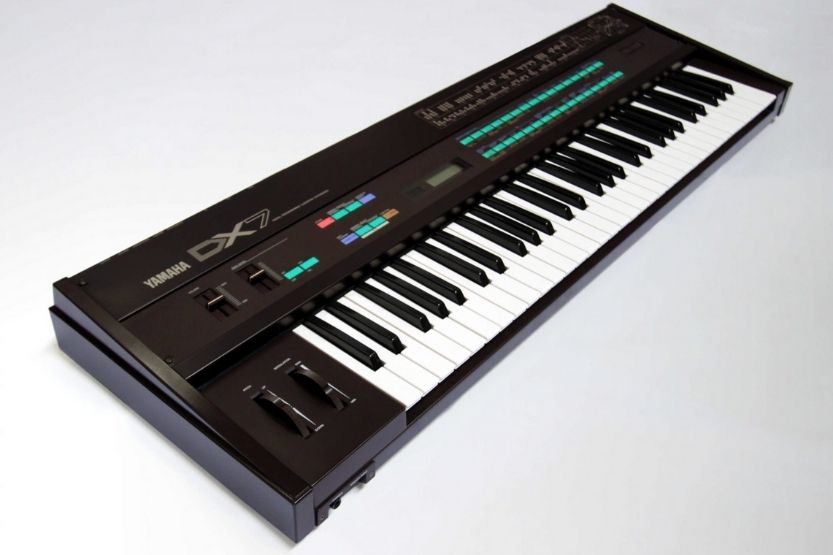
The Yamaha DX7 is the first successful digital synthesizer in the history of music. Its production lasted for about seven years and ended in 1989. Throughout these years, more than 200,000 units of the DX7 were produced and sold around the world. When it was first introduced, the DX7 was quite expensive.
Now, because of the many units sold, you can get a used one, still in good condition, for only about $500. These are reliable musical instruments that are still functioning for more than 20 years. Older analog synthesizers are not able to last this long and still be usable.
The Yamaha DX7 was the first synthesizer to use the FM (frequency modulation) system of synthesis. It isn’t easy to program, but you can produce excellent sounds that are not possible with analog synths when you get the knack for it.
With frequency modulation synthesis, the Yamaha DX7 can produce acoustic sounds, metallic sounds, and percussive sounds. John Chowning actually developed this technology in 1967. He was a professor at Stanford University. He sold his tech to Yamaha, which licensed it.
Famous Pop Artists That Used the Yamaha DX7
When Yamaha introduced the DX7, the music world was amazed by the distinct sounds that it produced. This is the first time that these sounds are heard. That is perhaps the reason why so many pop music artists used it. This instrument is instrumental in the success of their hit records.
If you see a complete list of the artists that took advantage of the DX7 sounds to bolster their records sales, you will be amazed at the household names that are included in the list. The most notable ones are:
- Whitney Houston
- Chicago
- Phil Collins
- Luther Vandross
- Kenny Loggins
- Billy Ocean
- A-ha
- Kool & the Gang
- Stevie Wonder
- Sir George Martin (musical arranger of the Beatles)
- Queen
- Elton John
- Vangelis
- Toto
- Chick Corea
- And many more
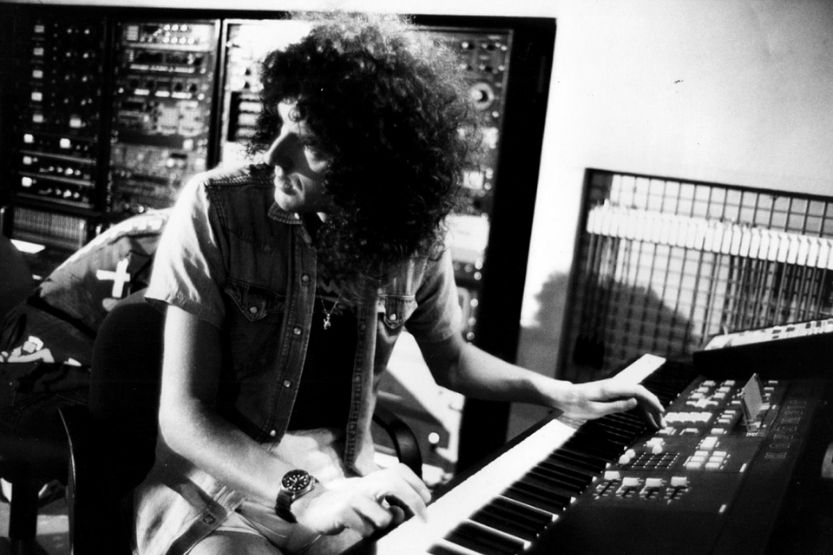
Yamaha DX7 Specs and Features
FM synthesis, the system used by the Yamaha DX7, is very different from the analog synthesis of the analog synthesizers before the launch of the DX7. The synthesized sound of the Yamaha DX7 is brighter and “glassier.” It could mimic the acoustic sounds of brass instruments better.
Yamaha licensed the tech developed by Chowning to create the DX7. The company lowered its manufacturing costs by combining it with very large-scale integration chips. The specs of the first Yamaha DX7 are the following:
Specs
- Keyboards – 61 keys
- Polyphony – 16 – voice
- Dimensions – 1,018 x 329 x 102 (L x W x H) mm.
- Weight – 14.2 kg.
- Aftertouch expression – Yes (channel)
- Oscillator – 6 analog sine wave operators per voice, 32 patching algorithms
- Left-hand control – pitch-bend and modulation
Features
- Settings buttons include controls for special effects like portamento.
- Sounds – instead of the fuzzy and warm sounds of analog synthesizers, the DX7 has a richer and brighter sound which is ‘chilly,’ ‘glassy,’ and ‘harsh.’ It has some preset sounds that include ‘plucked’ and ‘struck’ with complex transients.
- Keyboards – spans five octaves, with sixteen-note polyphony. That means sixteen notes can sound simultaneously.
- 32 sound-generating algorithms – each with a different arrangement of its six sine wave operators.
- Keyboard expression – allows for aftertouch and velocity.
- LCD – the DX7 was the first synthesizer to feature a liquid crystal display.
- Patches – the DX7 was the first synthesizer to allow users to name their patches.
Other Design Features of the Yamaha DX7
Minimalistic Design
During the Yamaha DX7 development and launch, it took a different approach from other synthesizers. Unlike the design values of analogy synthesizers, the DX7 has no control knobs that result in inaccurate settings. It used multiple switches together with an LCD that shows the parameter settings. This design exhibited the real nature of a digital synthesizer.
Timeless Form
The DX7 has a square body with all the controls flushed on the surface. There are no protruding buttons on the control board. This body design became the standard for all synthesizers from then on.
Revolutionary
Yamaha revolutionized the way musicians play synthesizers with the DX7. This musical instrument represented the ‘flick-of-a-switch’ method of selecting algorithms and presets for digital synthesizers. This design overhauled the image of analog synthesizers, which were very functionally dependent on buttons and knobs.
Professional
DX7 makes use of flat membrane switches instead of knobs and buttons. This allowed musicians to access all sound that the DX7 could produce through a flat surface. You’ll get a clean, professional atmosphere while using this synthesizer, with its clear DX green representing the different switch groups.
How the Yamaha DX7 Works
John Chowning invented FM synthesis technology in 1967 while earning credits for his DMA (Doctor of Musical Arts) at Stanford University. Yamaha agreed to license his tech and patented it before releasing its several models of DX synthesizers.
Basically, the FM synthesis of the DX7 works by taking one frequency and modulating it by another frequency. This instrument has six operators. These operators form a combination of an oscillator, an envelope, and an amplifier.
While the DX7 has only 6 operators, the combinations of sound possibilities or potential are quite endless. The sounds can range from real-life sounds to esoteric digital tones.
Why Was the Yamaha DX7 Influential?
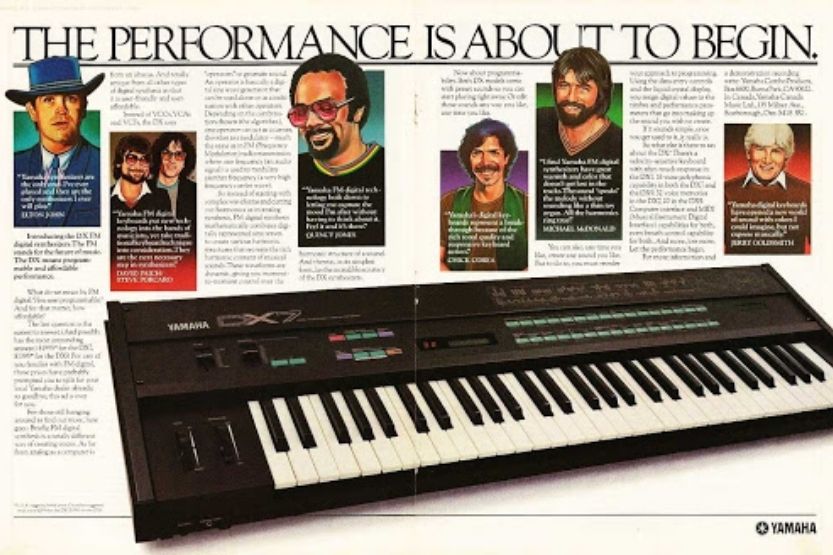
The Yamaha DX7 indeed influenced how companies make synthesizers. And below are some of the reasons why.
It optimized the polyphony of sounds. This synthesizer used an FM algorithm that modulated the sound frequency. Yamaha called it FM synthesis. Moreover, musicians have more refined control and modulate sounds using the Yamaha DX7 than analog synthesizers’ subtractive synthesis.
This expanded the range of timbers that digital keyboards can produce. With FM synthesis, digital synthesizers can now accurately mimic percussion instruments such as marimbas and many more. They can now be programmed and customized. Digital synths are now more predictable.
For these reasons, the synthesized sounds of the Yamaha DXT have become ubiquitous since the day it was launched. After many long years of using analog synths exclusively, musicians all over the planet flocked to the DX7. Its smooth and crystalline tones became the sounds in the airwaves in the 80s.
How the Yamaha DX7 Influenced Music
The Yamaha DX7 synth became so popular in the 80s that some believe it almost single-handedly started the third-party sound designers’ industry. It also forced other makers of synthesizers to examine the way they produce their own synths. The world of music in the 1980s was ruled by the sounds of the digital DX7 along with its rivals.
In the beginning, many musicians found that it was tough to program. There were no sliders or knobs, or buttons to adjust the sound. At that time, they were all used to making sounds mechanically.
DX7 Presets
So, instead of creating their own sounds, musicians used the presets of the DX7. In the 1980s, these preset sounds were trendy. For instance, the “E PIANO 1” preset became widely recognized, particularly in power ballads. This preset was used by Celine Dion, Whitney Houston, Phil Collins, Chicago, Billy Ocean, and Luther Vandross.
The “Fresh” by Kool & the Gang, “Danger Zone” by Kenny Loggins, and “Take On Me” by A-ha used the “BASS 1” preset. Music lovers worldwide loved the sounds coming from the DX7 synth, and they don’t know it.
For example, 40% of the number one hit singles on the US Billboard Hot 100 used the “E PIANO 1” preset. Around 60% of the RnB number one songs and 40% of the hit country songs use this particular set.
Rhodes Piano Preset
One of the popular presets of the DX7 at that time imitated a Rhodes piano accurately. This caused some musicians to switch from the Rhodes to the DX7. Some musicians also have skills in programming. They took advantage of the capabilities of the DX7 to find employment.
One of them is Brian Eno. He learned the ins and outs of the DX7 and created what he called ‘ambient sounds.’ Eno created and sold his ambient music with this new sound, starting with his own album “Apollo: Atmosphere and Soundtracks,” which he released in 1987.
Eno was also a record producer. He used the features of the DX7 on the records made by Coldplay and U2. He also shared his knowledge about recreating patches on the DX7 in a 1987 Keyboard magazine issue.
As with all novel things, interest in the Yamaha DX7 waned. Its sound started to be regarded as dated in later years. People’s interest in the FM synthesized sounds declined. So, now there are second-hand DX7s that you can buy for half the original price or even less if you know how to haggle.
Design History of the Yamaha DX7
When Yamaha launched the DX7 in 1983, the music world was dominated by the synthesized sounds from 32 algorithms and 6 sine wave generators typical of analog synthesizers. Yamaha did not expect that with their introduction of the DX7, pop music’s sound worldwide will change.
FM Synthesis
The tech of FM synthesis, which the DX7 has, was actually developed in the late 60s by John Chowning. Yamaha patented the tech in the 70s. The company initially released a piano based on this tech in 1981. It was the GS-1 FM piano. It was a bit pricey at $16,000 because it was targeted for the professional studio market.
Yamaha repackaged the FM synth tech two years later. They introduced the 61-note keyboard at a much affordable price of $1,995. This time, the market went agog with the digital synth. Every pop star wanted to have their own DX7.
Home music hobbyists also wanted to have their own unit. Some believe that this was the turning point in the development of the home music studio. This also gave rise to semi-pro musicians.
DX7’s New Design
In its launching of the DX7 in 1983, Yamaha really wanted to make it obvious to the whole world that it had made the first true digital synthesizer. They wanted to create a design, which announced that the digital age had really arrived.
That is why the body design of the DX7 is minimalistic, with a simple square form that could make it vividly different from analog synthesizers, which have control panels full of knobs and buttons.
Yamaha also used a new color scheme to differentiate the DX7 from the old analog tech. They used a vivid green color for the panel to give a stark contrast to the instrument’s dark brown body. Yamaha referred to this color as “DX Green.” This vivid green color eventually became associated with things digital and digital technology.
Conclusion: Yamaha DX7
The Yamaha Corporation first introduced the innovative and ground-breaking Yamaha DX7 in 1983. It was the first digital synthesizer ever, and it captured the hearts of music lovers, professional and amateur alike. From 1983 to 1989, it sold over 200,000 units.
Before its launch, musicians were using analog synthesizers. The Yamaha DX7 was different because it uses a new type of synthesis called FM or frequency modulation. Musicians had never heard the Yamaha DX7’s excellent sound before. Thus, making it popular.
Related reading:
Yamaha P45 Vs P71 – What Is the Difference?
Yamaha P71 Digital Piano Specs and Review
Yamaha U Series Upright Piano Specs and Review

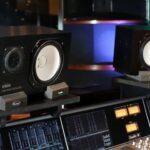
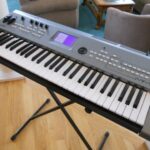

![Yamaha Grand Pianos [Specs and Review] Yamaha Grand Pianos](https://musicalinstrumentpro.com/wp-content/uploads/2021/08/Yamaha-grand-pianos-150x150.jpg)
![Yamaha Hybrid Pianos [Specs and Review] Yamaha Hybrid Pianos](https://musicalinstrumentpro.com/wp-content/uploads/2021/08/Yamaha-Hybrid-Pianos-150x150.jpg)
![Yamaha Upright Pianos [Specs and Review] Yamaha Upright Pianos](https://musicalinstrumentpro.com/wp-content/uploads/2021/08/Yamaha-Upright-Pianos--150x150.jpg)


